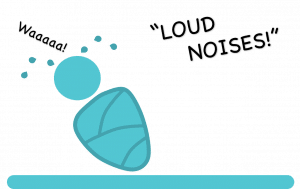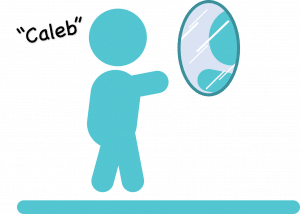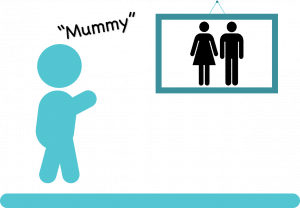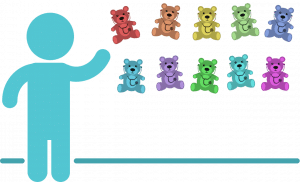to Child development is the process by which the dependent infant matures into the independent adult, functioning within society. It is a complex interweaving of biology, psychology and environment where each skill builds on the ones that have come before and provides a foundation for those skills yet to develop.
Development in humans follows a predictable pattern and a rough schedule but no individual develops in exactly the same manner as any other. It follows an orderly pattern (unlike almost everything else regarding children); from top to bottom, central to outer and simple to complex. What is important, when considering normal development, is progress and parity; that children are moving forward in the different areas of development at roughly the same rate.
Disparity in progress between areas of the body (e.g. the right side and the left or the lower limbs and the upper limbs) or between domains of development (see below) is concerning, as is regression (i.e. loss of previously attained skills).
This article will outline the typical stages of development that children go through. The features typically seen at each age are described below.
Hearing and vision
Hearing and vision refers to the acquisition of mature sight and sound interpretation. These two areas of development are vital as they allow for development within other domains. For example, in order to acquire a gross motor skill such as walking or running, it is important that the child has adequate vision to do so.
| Age | Feature |
| Newborn | Fascinated by human faces
Turns head towards light Startled by sudden noises |
| 1 month | Turns head towards diffuse light and stares at bright objects
Startles to loud noises
|
| 3 months | Focuses eyes on same point
Moves head deliberately to gaze around them Prefers moving objects to still ones |
| 6 months | Adjusts position to see objects
Turns towards the source of sounds |
| 12 months | Sees almost as well as an adult
Knows and responds to own name |
| 18 months | Recognises themselves in the mirror
|
| 24 months (2 years) | Recognises familiar people in photographs
Listens to conversations with interest
|
| 30 months | Recognises self in photographs
Recognises small details in picture books |
| 48 months (4 years) | Matches primary colours
Listens to long stories with attention |
| 60 months (5 years) | Can match 10 colours
|
References
| (1) | Kapoor, Barnes, “Developmental Assessment”, Paediatrics, Edition 4, 2013 |
| (2) | Lissauer, W. Carroll, “Normal Child Development, Hearing and Vision”, Illustrated Textbook of Paediatrics, Edition 5, 2017 |
| (3) | Sheridan, M. D., From birth to five years; children’s developmental progress, 3rd edition revised and updated by A. Sharma and H. Cockerill, Routledge 2007 |
| (4) | understood.org |
| (5) | thecommunicationtrust.org.uk |
| (6) | Meggitt, C., Child development, an illustrated guide, 2nd edition, Heinemann 2006 |
| (7) | kidsmatter.edu.au |
Authors:
1st draft: Trainee doctor Hannah Murray
Senior review: Dr Louise Ingram (Paediatric specialist registrar)




